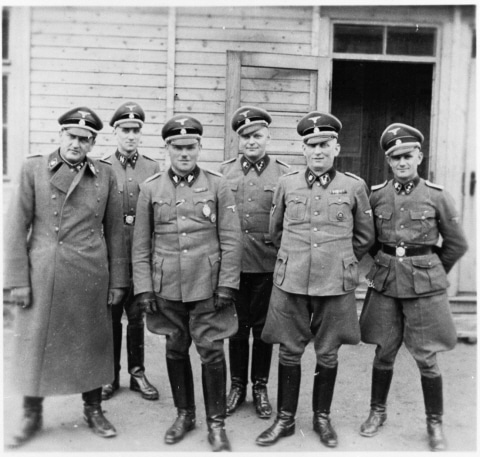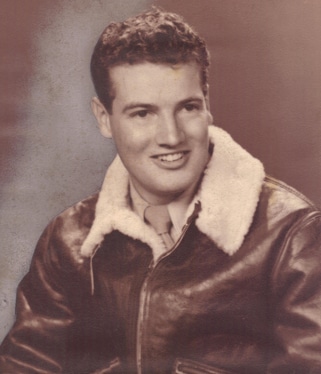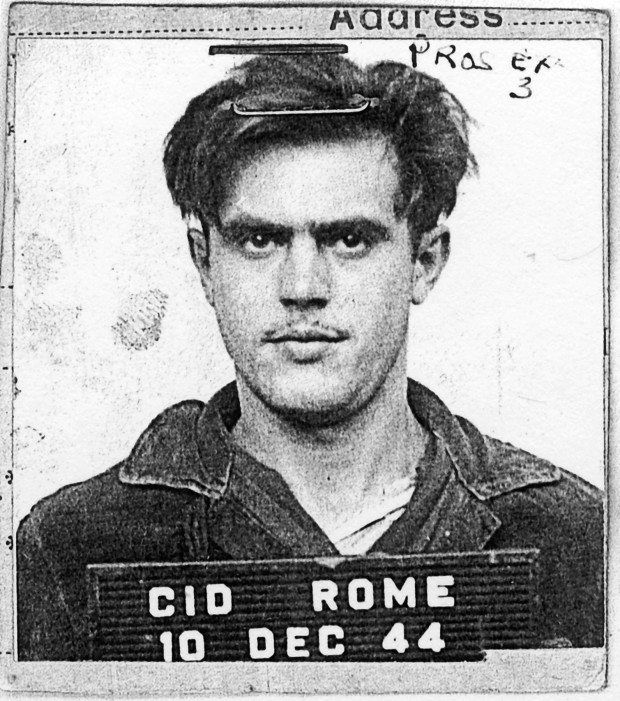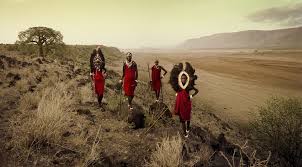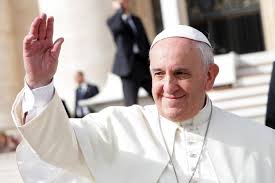
Smith & Wesson Model 627, .357 Magnum, 2.625-inch barrel
Now let’s examine what type of firearm you may want away from home, whether you are traveling out of town or doing routine day-to-day activities near where you live. First, respect all the laws in your area concerning open carry of weapons or concealed carry. Concealed carry is where firearms cannot be seen by the casual observer. Other definitions include: “carried in such a manner as to not be discernible by the ordinary observation of a passerby.” There is no definition of passerby, although I would submit that a law enforcement officer would “sense” the presence of a concealed firearm much more readily than my dear old grandmother! There does not seem to be a requirement that there be absolute invisibility of the firearm or dangerous weapon, merely that it not be ordinarily discernible. Open carry refers to the practice of “openly carrying a firearm in public.” I will not list the states in each category because it seems as if they are always changing – or at least changing pieces of their laws.
I also will not try and “hard sell” you on one type of weapon or another. Here are a few general rules, though.
The worst gun in the world is the one you chose not to carry and you then find yourself in a situation where you need that weapon but do not have it. Sometimes, it is just a matter of forgetfulness, but in most cases, a person does not take the weapon because it is too heavy or bulky and thus is uncomfortable to carry on your person. So you don’t carry it, and maybe 99.999% of the time it’s no problem; but that last .001% can be disastrous.
The second worst gun in the world is the one you are carrying, but it is one that either the ammunition or weapon does not function reliably. It could be too old and prone to small parts breaking; it could be unreliable ammunition (especially if you are firing reloads); or it could be a weapon that you are not truly familiar with and so you do things such as improperly seating the magazine, or leave the safety on when you want it off, or you freak out if it has a failure to fire and you cannot clear that, etc. You can get past this by having an experienced gunsmith inspect your firearm, use highly-rated ammunition, become extremely familiar with the weapon and keep it cleaned and lubricated.
The third worst gun in the world is the one you are carrying, which reliably functions, but you cannot hit the broad side of a barn with it. We are talking really bad here, as the range that you will generally be protecting yourself is not 100 yards, not 50 yards, but something less – often much less. That is not to say that you should never practice shooting at 25 to 50 yards, but start close, get proficient there and then work your way out instead of the other way around. So what can make your firearm inaccurate at close range? Perhaps the gun itself; perhaps the ammunition; but the most likely reason is that you are not practicing enough or that you are uncomfortable with the muzzle flash, the noise or the kick (recoil) of the weapon. To overcome any of those, try and practice your way out of it; the more you fire, the more you will become used to the effects. Make sure you wear hearing protection whenever you practice, as well as some type of safety/shooting glasses. You can do some simple weight training exercises to build up the strength in your hands, wrists and arms. We are talking about guns that weigh a few pounds; the heaviest pistol (we’ll use this word in place of handgun even though aficionados term semi-autos differently than revolvers) in the world is only about seven pounds. Get an expert to teach you.
Your genetics will determine the size of hands you have; and those individuals with smaller hands will generally – but not always – find it harder to control larger caliber pistols that those with bigger hands. However, even if you practice every day, there will be a caliber limit above which almost every person does not like to shoot – although that varies for each individual. But it leads to the fourth worst gun in the world: the one you have that is both reliable and accurate, but whose bullet is of insufficient caliber and velocity to cause your attacker to cease attacking you after it hits him. First, let us assume that you are shooting at the center of mass of the attacker – the center of his chest. That way, rounds spot on will hit things like heart and lungs (which quickly “dissuades” most attackers), while rounds that are a couple of inches off the absolute center will still hit vital life-support areas such as other internal organs and large blood vessels. Leave all the fictional novel and movie shots – such as head shots – for trained shooters. You can achieve the same effect in one of two ways. Either hit the center of mass with one, two or three rounds of a powerful caliber, or hit the center of mass with a whole lot of rounds of lesser caliber, because at some point the quantity of rounds hitting your attacker’s chest will have a lethal effect all their own. Of course, during the time it takes for you to hit your attacker with many rounds, allows him to be firing back at you.
This leads to perhaps the most-argued point in concealed carry handgun use – caliber selection. Ideally, you have been able to borrow handguns of different calibers – both semi-automatics and revolvers – and have fired enough rounds through every one that your friends are starting to complain that you are going to burn out their barrel (a specious claim unless you make competitive shooting your life’s work.) Many ranges, such as The Bullet Trap in Macon, Illinois, let you rent different firearms; that is a good way to avoid buying a handgun that you subsequently find you do not like. You know what caliber and type of weapon you can control and with which you can hit your paper target, or perhaps metal silhouette, time after time in generally good lighting conditions, but not under the level of stress you will encounter in a real-life dangerous situation. Can you remember what sequence you need to follow to shoot the weapon without fumbling around? Can you make adjustments after the first shot if it is not center of mass and quickly make a follow-up shot that is accurate? Can you reload it quickly? In lower light conditions (sometimes a range will let you do this if you are supervised and no one else is on the range) are the factory sights still useful? Can the weapon you intend to buy later be fitted with a laser sight, such as one from Crimson Trace, should you want to try that method of low-light condition shooting?
I have shot thousands of pistol rounds over my lifetime, from calibers of .22 Long Rifle, to .45 ACP to .44 Magnum. I have shot other weapons in combat in the Army, but have never shot a pistol to try and kill another human being. I am a pretty good shot in training conditions; I like to go to the range and my lifestyle allows me to practice whenever I wish. I have fired both semi-automatics and revolvers; my guess is that I have fired 60% of all pistol rounds through semi-autos and 40% through revolvers. I have never fired a derringer. It was only a matter of time before I obtain a laser sight, because as the years go by I can see its benefits. As I assess what the most likely danger I will face with my lifestyle (I don’t stay out late at night in high-risk areas,) and having been in high pressure situations, I know how stress works and for me that means I need a very simple weapon, a revolver. I also assess that if I am in a shooting situation, it will generally be one or two assailants trying to rob me, or – if the national security situation continues to deteriorate – with ISIS jihadists in this country trying to kill active or retired military, either lone attackers or in groups of two (the greater the size of each group the more likely it is that it will be exposed before it acts; two individuals, or lone wolves, can remain pretty secret.)
So for a maximum of two targets, in which the worst case is that they are actively trying to kill me, I believe that by choosing a .357 Magnum revolver, with an eight round cylinder, I should be able to end the engagement within those eight rounds, probably half that, but better safe than sorry. The .357 Magnum should be powerful enough that one center of mass hit will likely incapacitate or kill the attacker and two center of mass hits certainly will. I’ll have a speed loader just in case I am trapped and cannot get out of the area, and if there is a group larger than two, I should be able to see their presence earlier that will permit me to evade them and call the situation in to authorities. Given the expense and vagaries of the legal system, it is a lot easier for me if the legal authorities kill these punks and not me.
Yes, there are always outliers. In one incident a few years ago, a Chicago police officer fired 33 rounds at an assailant; the gang member was struck 14 times with .45-cal. ammunition – six of those hits in supposedly fatal locations. The fourteenth and last round killed him. But the only way to eliminate all outliers would be to carry a flamethrower and my better half would nix that right away.
That whole lengthy (perhaps too lengthy!) diatribe led me to try a Smith and Wesson Model 627, .357 Magnum, with a 2 5/8 inch barrel, courtesy of The Outpost Armory, located near Murfreesboro, Tennessee at Exit 89 off I-24. They have a huge selection of firearms, ammunition, gear, and reloading supplies (615-867-6789.) What convinced me? Again, simplicity is most important; if one of the eight rounds were to fail to fire, I simply squeeze the trigger again and the cylinder rotates with another round. Secondly, I can use a little less expensive ammunition (.38 Special) to practice. Now given the short length of the barrel, which aids in “carryability” (remember the worst gun is one that you don’t carry,) the velocity the rounds coming out of this are going to be slower than a pistol with a longer barrel. Many .357 Magnum 125 grain jacketed hollow points have a muzzle velocity of 1702 feet per second from a six-inch barrel, while the muzzle velocity in a 2 5/8-inch barrel is only 1193 feet per second. For 158 grain .357 Magnum jacketed hollow points – another popular self-defense load – those fired from a four-inch barrel, for example, will have a muzzle velocity of 1293 feet per second, as compared to 1053 feet per second in the shorter barrel.
Those numbers show a difference to be sure, but how does that translate to common terms and is that reduced velocity still effective? In gelatin tests that replicate the human body, the Winchester .357 Magnum PDX1 125 grain jacketed hollow point bullets penetrated a layer of denim (simulating clothes) and then 13.5 inches of gel, the diameter of the wound channel being much greater than .357-inches for the first five inches of penetration. Given that this performance was from a .357 Magnum with a shorter 2-inch barrel that indicates to me that the Model 627’s short barrel will do just fine and that it was interesting to go through a wide variety of .38 Special ammunition, .38 Special +P ammunition and .357 Magnum ammunition to see what is ideal for both the pistol and this shooter. Remember, no matter what caliber you end up with, the round must have enough energy to reliably deliver an expanded bullet (one that mushrooms, becoming a larger diameter to do more damage) – deep enough to do its job to cause enough injury to stop the attacker. It doesn’t have to be a lot of extra energy – it just has to be enough.
OK, now about the pistol itself. The Model 627 has an empty weight of 37.6 ounces. If it is loaded with 125 grain jacketed hollow points, add another 4.16 ounces (0.52 ounces per) for a total weight of 41.76 ounces. If you are firing 158 grain rounds, that will increase to 42.15 ounces. The length of the barrel is 2.625 inches; overall length of the weapon is 7.625 inches. The overall appearance, perhaps in part because of the unfluted cylinder, is chunky, with a “There is no way I can conceal carry this,” thought crossing my mind. The stainless steel frame and stainless steel cylinder have a matte finish; it is an N-frame, the same platform the company uses for its .44 Magnum. If you are ordering one, the SKU is 170133, which will ensure you get the right model. The front sight is a dovetail red ramp, while the rear sight is an adjustable white outline. The trigger is both double action and single action capable. The 8-shot cylinder is recessed to be able to use full moonclips for reloading. The Model 627 is one of the S&W Performance Center products, which the manufacturer indicates are made to a higher standard (“the ultimate expression of old-world craftsmanship blended with modern technology”); S&W has figured out supply and demand and because they do not churn PC products out in large numbers, wait times are often long.
The piece has a transfer bar safety mounted on the frame; this thin strip of metal rises once the trigger is squeezed, allowing the hammer’s energy to be transferred to the firing pin and then on to the primer. What this allows is for the shooter to load all eight chambers, as the technology (which is not confined to only Smith & Wesson) eliminates the small chance that the hammer could get snagged on clothing and then drop accidentally on a round discharging it.
The first thing we’ll do is see what the accuracy of the piece is when fired from a supported position; we want to take as much human error out of the shots, so I will rest my wrists on sandbags on top of a sturdy table, sit on a nice chair, so there is no twitching or jerking from my end of things. I have very good protective hearing headsets, to eliminate the noise factor. The lighting conditions are bright in the indoor range; again, we want to see what the Model 627 will do in as perfect an environment as we can make it. We will begin with single action firing to take even more human influence out of the equation. We will start with the factory grips (believe they are “Secret Service” style) that are wood and have two finger grooves, leaving my little finger off the weapon; I can tell that I will be uncomfortable with this as with every other pistol I have liked firing – even the diminutive Walther PPK – I have been able to get all my fingers on the grips.
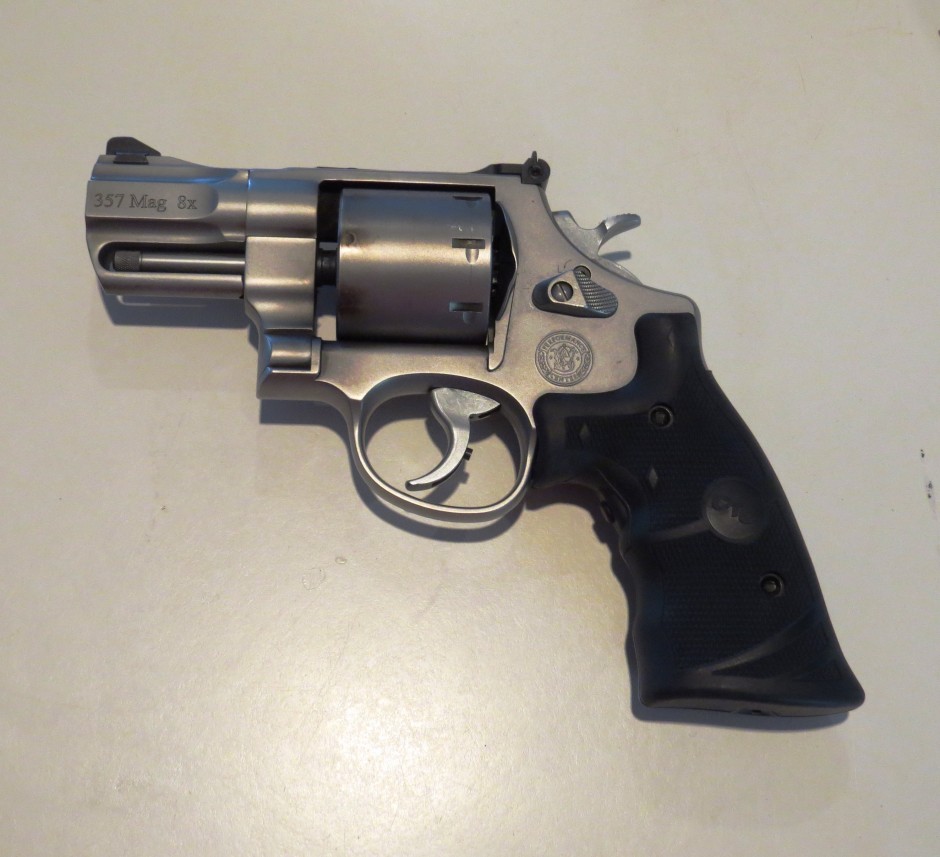
Smith & Wesson 627 with Crimson Trace
Went to the range and sure enough, my concern was well-founded; I simply could not control the weapon and the checkered grip bit into my right hand at every opportunity. I quickly obtained a Crimson Trace Lasergrips, the Model LG-314 for Smith & Wesson N Frame round butt revolvers. They went on easily and provided two positive results. First, the rubber overmolded grips provided apace for all fingers, as well as made the weapon easier to control. Second, they assisted in accuracy. The test session at the range with the new grips proved outstanding. Firing at B27Q—Blue Half-Size (human silhouette) targets to add a bit to the difficulty factor, I found that firing at distances from 21 feet to 45 feet – using both iron sights and the laser – for every eight round cylinder, I averaged six rounds in the ten and nine rings and two rounds in the eight ring. These shots were taken 50% supported on sandbags and 50% from standing unsupported. This included .38 Special rounds, Remington .38 Special +P rounds, some Western Super X .357 Magnum 158 grain, and even some Buffalo Bore .357 Magnum 180 grain hard cast lead.
Renowned gun writer (and shooter) Elmer Keith once stated that a short barreled revolver was no less accurate than one with a six inch, or longer, barrel. This Model 627 really looks promising, so let’s start experimenting with how to best carry it. Two methods of carry stood out. The first was a shoulder holster from Armory Express Outlet in Coral Gables, Florida. The owner, Tom Gucciardi, worked with me and the end product is an excellent horizontal carry, with the pistol under my left arm and two speed reload pouches under my right. The straps are thick and wide which is important as its a heavy pistol. The weight is well-distributed; you won’t forget you are wearing it with a revolver this size, but once I applied some R.M. Williams Saddle & Leather Dressing from Australia, the straps became so pliable it added a great deal of comfort.
The second holster I have found quite useful is from Diamond D Leather in Wasilla, Alaska. From them I obtained a Guides Choice leather chest holster. This holster puts the pistol in the direct center of your chest and was developed for hunting and fishing guides in Alaska, who might require a pistol quickly in case of an unexpected encounter with a dangerous animal. The design is open carry and I will carry it that way each time I go fishing in Montana with my old Army buddy Hank; in fact it allows (at least for me) the fastest method of drawing this particular weapon. In addition, I have found that it can be carried in this guide holster concealed if you wear a light dark-color windbreaker over it. In short, its a great revolver, a hard puncher and an excellent eight-round capacity, combined with an excellent sight and wrapped in two excellent holsters.
